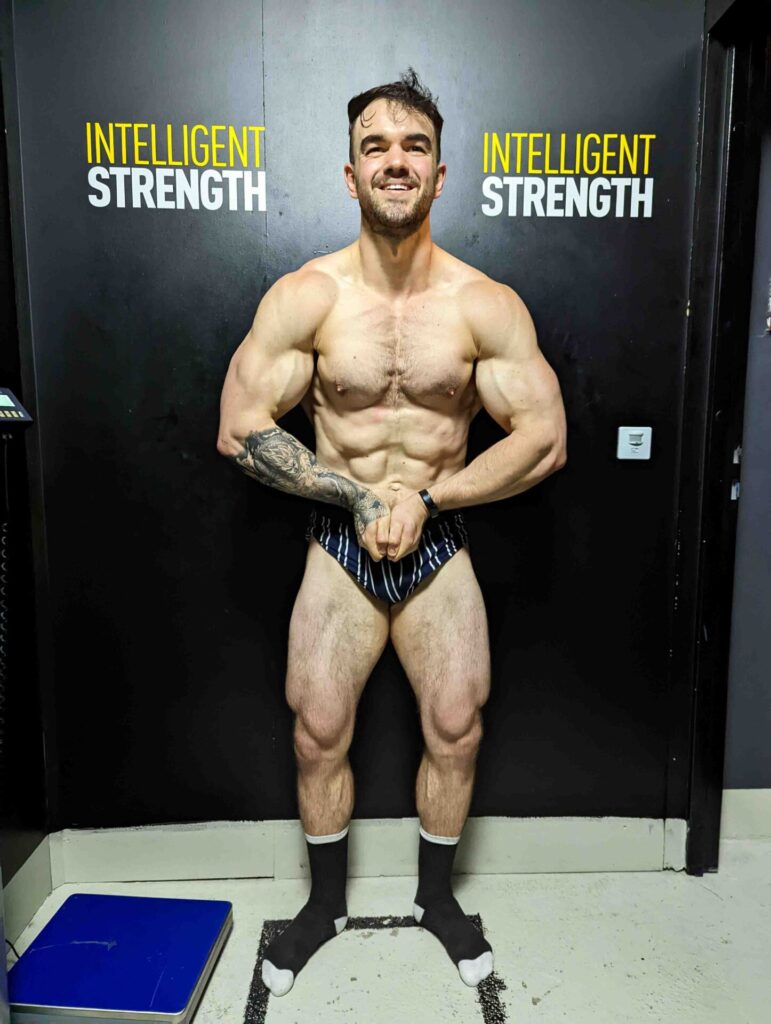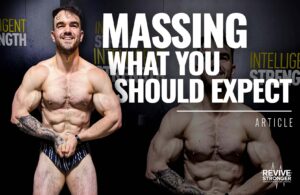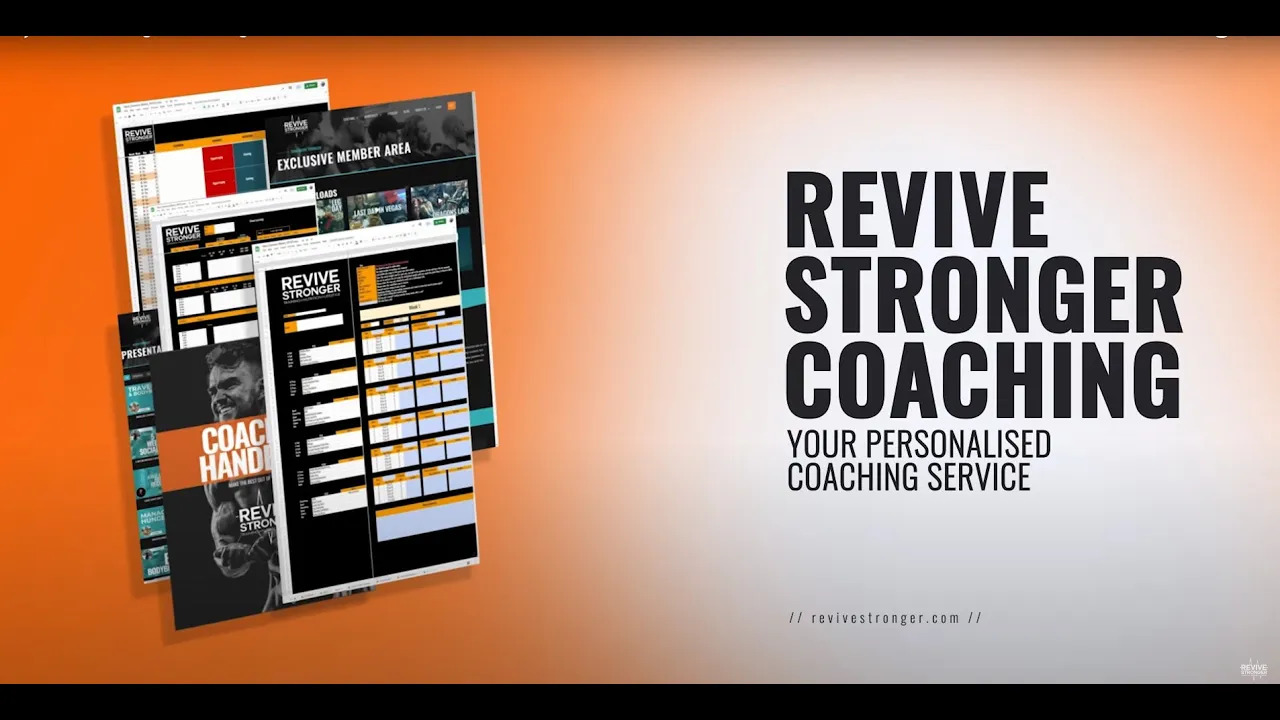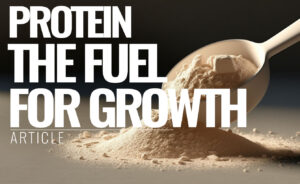
Revive Stronger
Is a massing phase right for you?
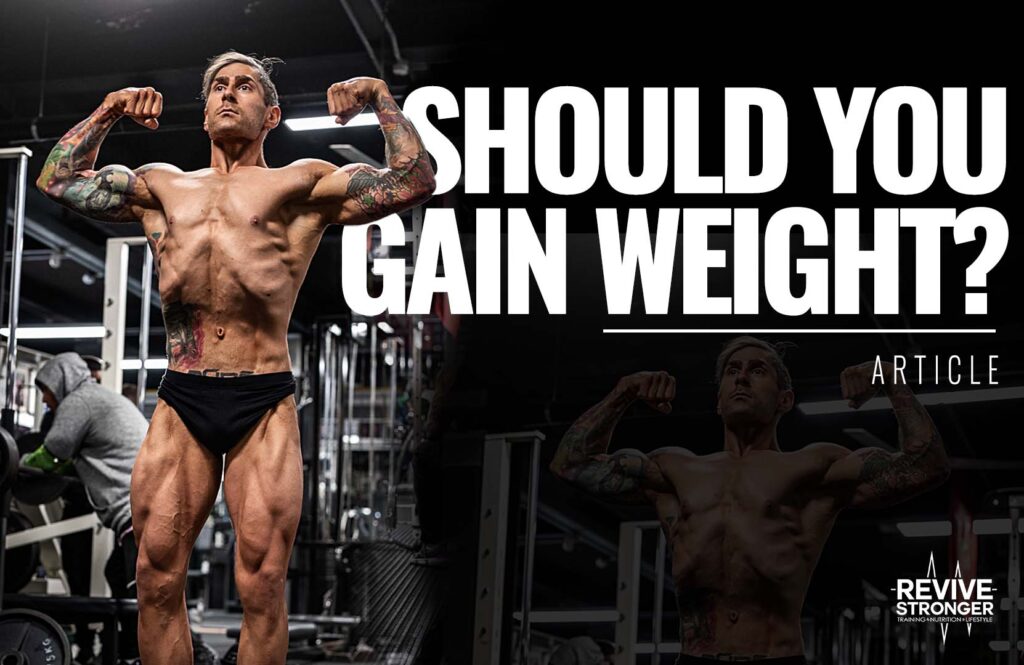
Words and definitions:
- Hypercaloric: a state of energy balance where energy consumption is greater than that of energy output
- Eucaloric: a state of energy balance where energy consumed is equal to the energy put out
- Hypocaloric: a state of energy balance where energy consumption is less than that of energy output
- Adiposity: status of fat on the body.
- Mortality: relating to death
Building muscle is a seemingly easy objective to put into words but is a far more arduous process to execute. It takes effort, money, patience, and time. With the latter being one of our most sacred of commodities, it becomes difficult to reason with the effort that it demands of you. The following is a piece not meant for the novice trainee. Instead, it is meant for the individual who has trained beyond the time frame where gains in new tissue come with simply showing up. Beyond these early stages in a training life, sacrifices in the aforementioned above are mandatory which means in order to reason with making these sacrifices, having an effective massing phase is important. This means it is important to establish a few questions first.
When is a massing phase most appropriate and when is it least appropriate?
Who is a massing phase for and who is it not for?
Lastly, what does an effective massing phase ultimately look like?
Much of this written piece will simply be dedicated to exploring whether or not a massing phase is right for you.
Table of Contents
What is a gaining phase?
To start, it is important to make clear how we will be defining a massing phase before we begin to address any of the questions posed. A massing or gaining phase can simply be defined as a period of time spent in a hypercaloric environment dedicated towards the purposeful growth of new tissue. This means you are eating more calories on a given day than your body expends. Slamming pizza on a night out isn’t necessarily on its own cause for defining a massing phase. Acutely this may have been the case, but no reasonable or measurable growth of new tissue should be expected from this singular event. Although the distention in your stomach may lead you to believe otherwise. A true dedicated massing phase could be anywhere between a few weeks to a few months. In some cases, but likely less applicable to most people, even years. This would mean that during this time the majority, if not all, of the time is spent in a hypercaloric environment.
When do you want to do a massing phase?
With massing phases clearly defined, we need to establish whether a massing phase is appropriate. Most people spend their fitness-related journeys seeking fat loss, which generally comes with weight loss, not seeking weight gain. Unfortunately for most attempting to build lean tissue beyond the early stages in a person’s training life comes at the cost of adding body fat. The general environment that is most conducive of muscle growth also just so happens to be a potent generator of body fat (Aragon & Schoenfeld, 2020). Great internal conflict then usually arises. Do you lose the washboard abs in pursuit of bigger biceps? Perhaps this is a battle not worth pursuing, and if you find yourself in this camp, you may find that the massing phase isn’t right for you. If, however, you find that you are okay coming to terms with this reality you have checked the proverbial box necessary to continue onward.
Do i have to do a massing phase?
It isn’t uncommon for individuals to seek out gaining muscle through a hypocaloric or eucaloric conditions. In these cases, someone is eating less calories than they expend in a day or the same amount respectively. While there are settings and circumstances where this is possible, it unfortunately is unlikely to be an effective and productive way at promoting new tissue growth. This is particularly the case for lifters who have advanced beyond their novice years. It is understandable to expect people to want to navigate their massing in a hypocaloric or eucaloric state. It would be incredible if we could continue to gain size while maintaining an Adonis like stature. While not always objectively possible, we can still aim to get big and stay lean.
How can I stay Lean while gaining muscle
Now I think it has been made clear that for the reader that this is intended for, gaining some body fat in your pursuit of bigger biceps, or even bigger calves, is a requisite for those goals. For quite some time it was thought that higher states of adiposity would lead to higher rates of fat gain through a massing phase. This is to say that much like having more invested in a particular stock, you receive more in return for having had a larger initial investment. Simply put, the more fat you have at the start of the massing phase the more fat you gain relative to muscle through a massing phase. In the scientific community this has been coined your p-ratio.
This was the popular, and accepted, hypothesis until some recent critiques of this model had shed light on them (Should you cut before you bulk?, 2021). Despite the criticisms, it still holds firm as the generally accepted model and at the very least likely promotes better health outcomes when starting a massing phase at a lower body fat percentage. The preponderance of the literature supports lower body fat percentages and reductions in all-cause mortality (Jayedi et al., 2022). It seems in this case, at least for the health conscious, starting at a lower body fat percentage is the way to go.
If starting a massing phase is advisable at a lower body fat percentage, what then is the appropriate percentage?
Fortunately, there is a wide range of acceptable percentages that are likely fine. A problem that is worth exploring in the future are our current means for assessing body fat percentage. Tests have varying degrees of accuracy but, it’s much like stepping outside in the winter. You know it’s cold the moment you walk outside. A thermometer isn’t going to tell you anything that the blistering cold whipping across your face isn’t already telling you. Expensive tests are fine means to give you objective data to use as a reference for progress but should not be a sole piece of data to assess readiness for a massing phase.
Summary
So, you finally have yourself coming to terms with putting on a bit of winter fluff, growing your calves, and you are at a relatively low body fat percentage. This should be enough for you to make the plunge, right? Maybe. If you recall, the pursuit of adding mass is a time-consuming one. One that should still take attentional focus, patience, energy, and more money to pay for the extra food. You may check off all the boxes for starting a massing phase, but if you aren’t ready to commit to these lifestyle changes then it is likely the calves may just need to hold off a bit. We will talk about various nuances involved in assessing rates of gain, what should be realistic, and much more. This at the very least should form the foundation for assessing at a basic level your readiness to pursue getting big and staying lean.
References:
- Aragon, A. A., & Schoenfeld, B. J. (2020). Magnitude and composition of the energy surplus for maximizing muscle hypertrophy: Implications for bodybuilding and Physique athletes. Strength & Conditioning Journal, 42(5), 79–86. https://doi.org/10.1519/ssc.0000000000000539
- Jayedi, A., Khan, T. A., Aune, D., Emadi, A., & Shab-Bidar, S. (2022). Body fat and risk of all-cause mortality: A systematic review and dose-response meta-analysis of prospective cohort studies. International Journal of Obesity, 46(9), 1573–1581. https://doi.org/10.1038/s41366-022-01165-5
- Should you cut before you bulk?: How body-fat levels affect your P-ratio. Stronger by Science. (2021, February 8). Retrieved November 17, 2022, from https://www.strongerbyscience.com/p-ratios/
What Next?
Join our free facebook group or add us on instagram (revivestronger) and ask your question there, I will respond asap. Or if you’re after more and want to take your training and nutrition to the next level, go and sign up for our coaching service.
One more thing…
Do you have a friend who would love the above?
Share this article with them and let me know what they think.
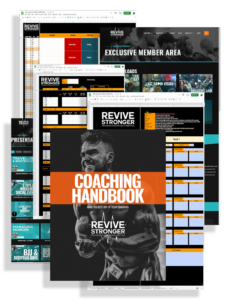
Coaching
I hope you liked this article. If you want to learn more or if you’re still unsure about how to apply the methodologies or the way to go about it, sign up for our coaching and benefit from first-hand experience and take your progress and knowledge to the next level.

Author – Danny Wirt
Danny is a former University professor teaching courses in exercise and sport science to various levels of undergraduate students. He is currently pursuing a terminal degree in Health and
Human Performance with previous experience in sport supplement research in graduate school and clinical exercise research at the University of Pennsylvania. Outside of his academic-related entanglements, Danny competed competitively in powerlifting and has a strong interest in physique-related sports. If he isn’t training, reading, or writing, he’s spending time with his wife and dog eating, relaxing, or going on walks.
We are a personal coaching service that helps you achieve your goals. We want you to become the best version of yourself.


